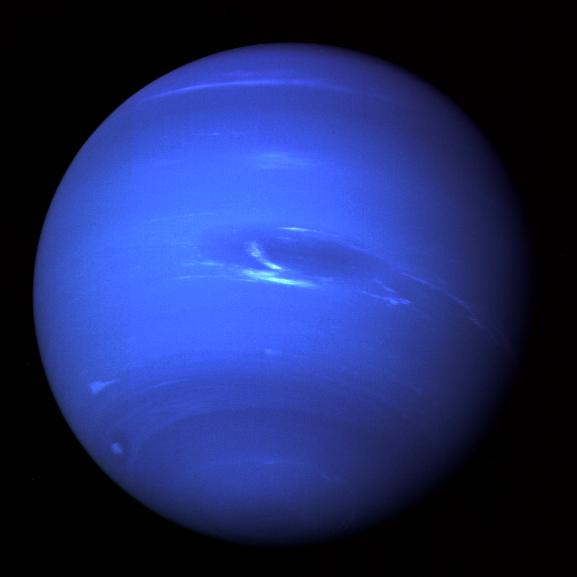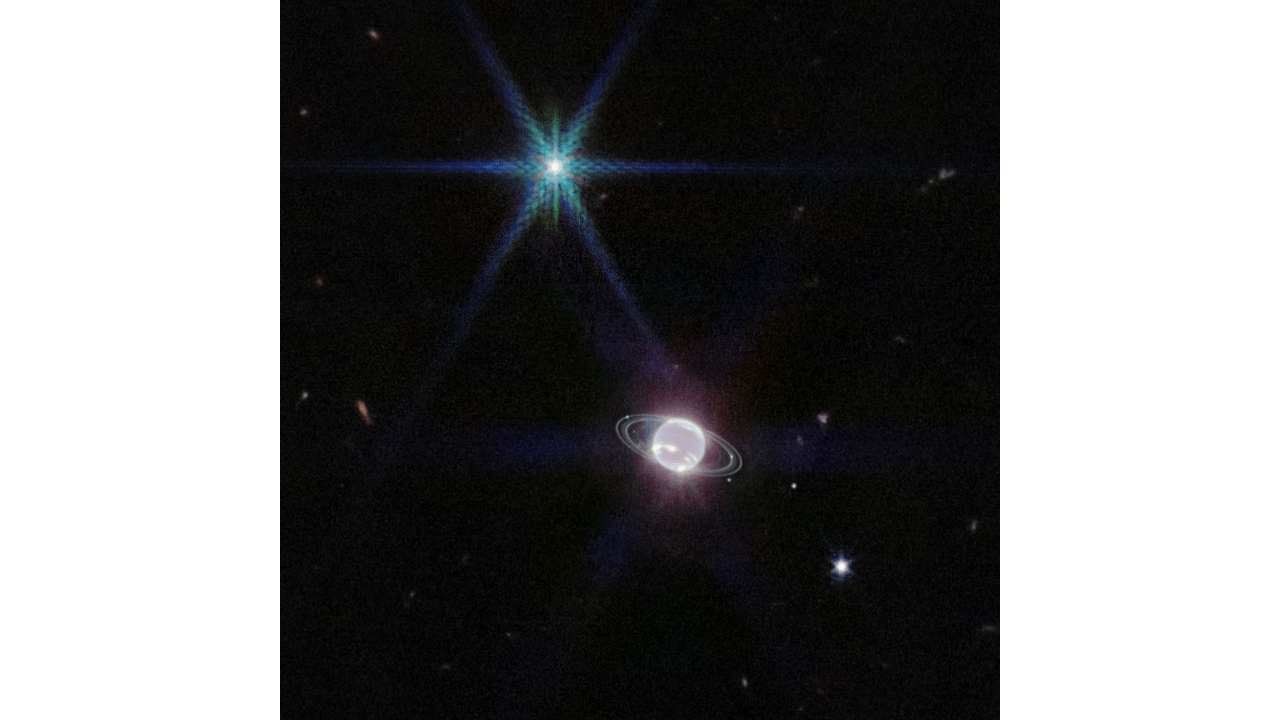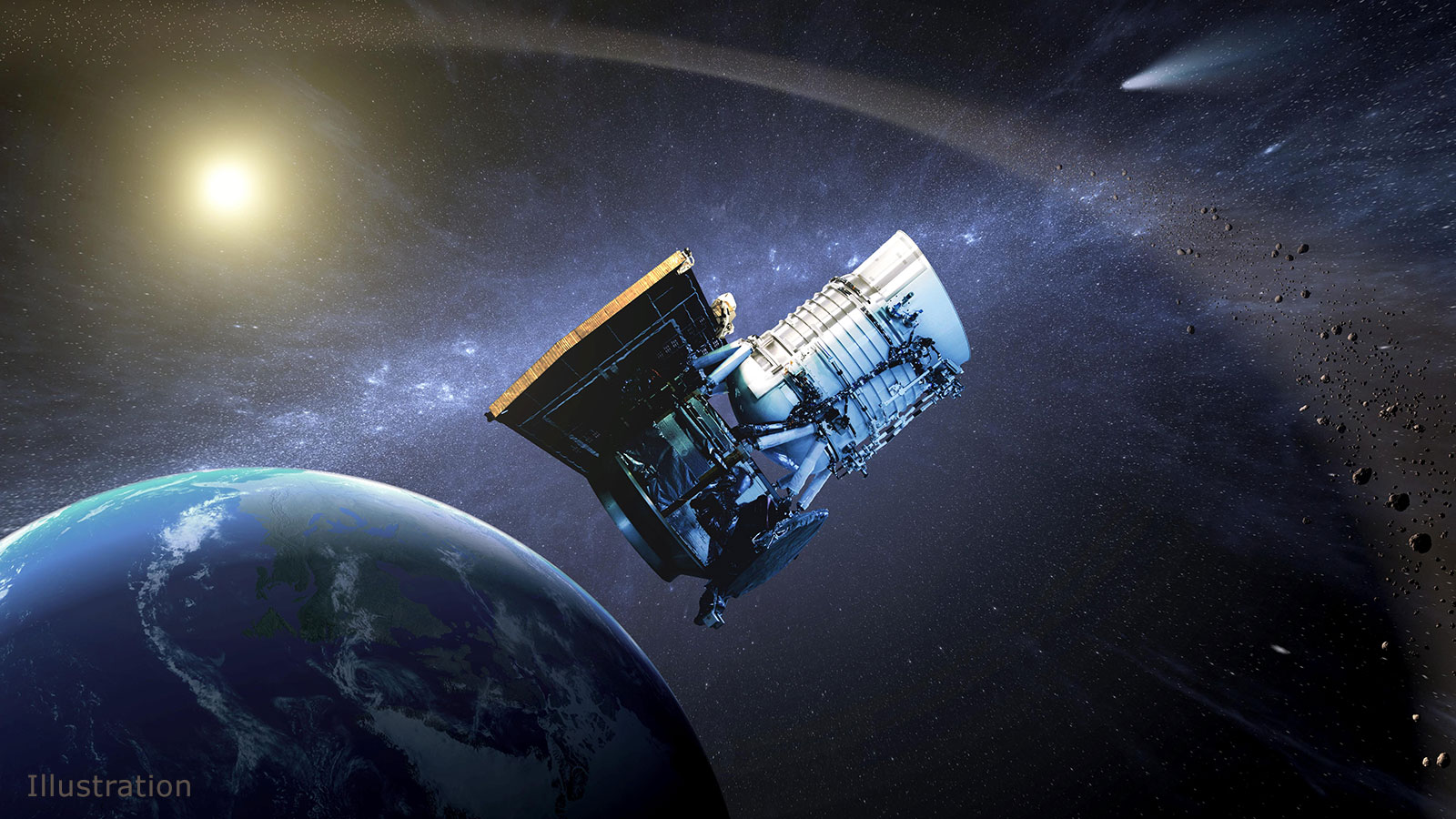4 min read

Opposition comes every September, and it’s not just kids who resist going back to school after summer vacation. September is also when the planet Neptune will be at opposition – an annual event when Earth passes directly between Neptune and the Sun.
At opposition, Earth is closest to our most distant planetary neighbor, and Neptune and the Sun are at opposite sides of us. For astronomers and sky watchers, it’s a great opportunity to observe this planet that’s invisible to the naked eye.
An ice giant, a planet of monster storms, and a recluse rarely seen, Neptune at opposition reaches its highest point in the sky around midnight. This makes evenings in September the best time to grab your telescope or high-powered binoculars, and use a sky chart or sky-watching software to view this planet that is 30 times farther from the Sun than Earth. When you find this elusive planet that appears as a mere dot in most amateur telescopes, remember that you’re actually viewing a world with a thick atmosphere composed of massive amounts of hydrogen and helium with traces of other gases. That atmosphere surrounds a solid interior of rock and a warm mantle of dense fluid, deep beneath the clouds.
Neptune’s opposition occurs every 367 days, on average. After one event, Neptune is in nearly the same spot when Earth circles around again a year later. That’s because Neptune’s orbit takes so long, lasting about 165 Earth years; in fact, Neptune has made only one orbit around the Sun since it was discovered in 1846.
Neptune’s opposition will remain an autumn phenomenon through the 2050s, as the planet creeps along its orbit and across our calendar. In 2066 it will occur on Christmas Eve.
The Sept. 9, 2019, opposition event came just after the 30th anniversary of the Voyager 2 flyby of the planet, in 1989. So far the only terrestrial visitor to Neptune, Voyager 2 provided our closest glimpse of the planet, passing about 3,000 miles (5,000 kilometers) above its north pole, while also spotting six undiscovered moons and confirming the existence of faint rings around Neptune. The pictures Voyager 2 sent back gave scientists a new snapshot of weather in the extreme, including a dark and violent vortex that looked similar to the Great Red Spot on Jupiter. Since then, observatories such as the Hubble Space Telescope and James Webb Space Telescope have given us additional views of the planet from afar. NASA scientists have learned, for instance, that unlike Jupiter, the Neptune vortex disappears for a time, and then similar storms appear later. Scientists have determined that Neptune has seasons such as those on Earth, but that these are much longer, spanning decades instead of months. By studying these seasons on a continual basis, scientists look to gain a better understanding of the similarities and differences of atmospheres on other planets, including right here on Earth.

Binoculars and telescopes can pick up Neptune other times during the year, but proximity, brightness, and position in the sky make opposition the peak opportunity. So consider taking a look at the ice giant Neptune in September, and you’ll see why it captures the imagination of so many scientists and astronomers. Grab your telescope, step outside, and enjoy the view.
For more details on Neptune and the other planets in our solar system, visit science.nasa.gov.







